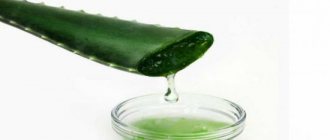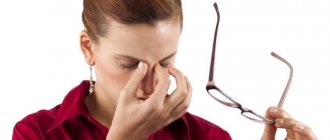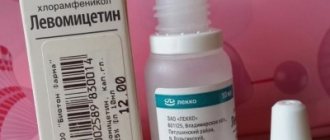The human eye is very sensitive and reacts sharply to any changes in the external environment. Increased tear production in cold or windy weather is one such reaction. Watery eyes outdoors is a natural reaction of the body and a common occurrence in winter for any person. However, in some cases, this manifestation indicates the presence of pathological processes in the body that require treatment. Therefore, it is important to know when to worry and see a doctor.
General information
Lacrimation is the process of the eye releasing tear fluid, a clear substance consisting of 99% water and 1% a combination of salt and protein. Tear secretion is a special mechanism that performs several important functions:
- Calming and anesthetic effect. The tear fluid contains a substance similar to morphine, so when a person cries from an excess of feelings, it becomes easier for him.
- Cleansing the body of toxins and harmful substances.
- Protective function. When tear fluid is produced in an amount of 1 cm3 per day, a protective film is formed that prevents the cornea from drying out and the penetration of foreign bodies into the eyeball.
Most often, the release of tear fluid is a reaction to a strong emotional experience. Although in some cases, severe lacrimation is a manifestation of various diseases.
What to do if you have tearing?
If there is prolonged lacrimation for no apparent reason, you need to consult an ophthalmologist. After the final diagnosis is established, treatment appropriate to the situation is prescribed. The doctor, as a rule, prescribes tear drops, but folk recipes can also help.
Decoctions (infusions) for lotions and rinsing
You can boil half a glass of millet in 1 liter of water and wash your eyes with the broth half an hour before going to bed. A decoction of sea buckthorn branches and leaves is prepared in the same way. It is used for rinsing for lesions and diseases of the cornea.
A decoction of dill seed is very effective. 1 tbsp. l. Pour a glass of cold dill seeds, bring to a boil and let it brew for a couple of hours. Before going to bed, wash your face with this decoction, and then apply cotton swabs for a quarter of an hour. Do this for two weeks in a row, then repeat 1-2 times a month.
Here's another recipe. 1 tbsp. l. Pour half a liter of boiling water over blue cornflower flowers and leave for an hour. Strain through several layers of gauze. Use the infusion for lotions.
For inflammation of the eyelids and eye diseases, you need to squeeze a teaspoon of juice from an indoor Kalanchoe flower, add 2-3 tsp to it. chilled boiled water. Moisten pieces of cotton wool in the resulting solution, squeeze lightly and place them on closed eyelids for 10-15 minutes.
Fresh cucumber juice is also used. As an option, cucumber slices are placed on closed eyelids for 15-20 minutes - and they also perfectly relieve all kinds of inflammation.
Video recipes:
Baths
You can wash your eyes with honey water, dissolving 1 tsp. bee product in half a cup of warm boiled water. For this, a special eye bath is used, which can be found at the pharmacy.
The procedure itself is like this. While standing or sitting, look down and firmly apply the solution-filled tray to your eye.
Next, for 5 minutes you need to move your eyelids left and right and up and down, blink well and often so that the eye is washed well, first one, then the other. If you do this 3 times a day, then within a week or a week and a half it will become noticeable that your vision seems to be renewed. It’s not surprising - after all, procedures with honey water really cleanse the eyes and even relieve intraocular pressure.
Causes
Tearing on the street is a common phenomenon that any person regularly encounters. The reasons for this can be very diverse - from a banal protective reaction to dust and irritating substances in the air, to a severe burn to the eyeball. An adult may have watery eyes on the street in the following situations:
- Age-related changes. With age, blood circulation is disrupted, the elasticity of blood vessels deteriorates and the lens hardens. Due to decreased muscle tone, involuntary release of tear fluid occurs.
- Dry eye syndrome. Occurs as a result of prolonged exposure to a computer or TV. Due to excessive drying of the cornea, tear fluid begins to be released. This process is especially intensified on the street.
- Allergy. If a person has an allergic reaction to dust, wool, smoke, pollen, etc., then when going outside, tearing may occur. This phenomenon occurs especially often in spring and summer.
- Incorrect vision correction. If the optical correction was performed incorrectly, this causes discomfort and excessive moisture in the eyes.
Also, watery eyes in the cold can be caused by the following factors:
- use of low-quality cosmetics;
- foreign body getting into the eye (mote, sand, flies);
- staring at one point for a long time;
- colds, inflammatory diseases;
- lack of vitamins;
- ENT diseases (rhinitis, otitis media, deviated septum);
- eyeball burn.
If tear fluid is released from only one eye, this may be a sign of conjunctivitis, blepharitis or demodicosis. In young children, tearing on the street can be a normal phenomenon that occurs due to the structural features of the visual system, namely, the presence of an internal partition in the outflow canals.
Sometimes only a qualified specialist can determine the exact etiology of increased tearing.
If this phenomenon causes severe discomfort, you should consult an ophthalmologist.
Causes of lacrimation on the street
Dry eye syndrome
Xerophthalmia is a condition that is often encountered by contact optics users, office workers, and patients with certain eye diseases.
Appears due to:
- incomplete closure of the eyelids;
- dry indoor air;
- taking certain hormonal medications;
- lack of vitamin A.
Overwork
Symptoms of fatigue are most often encountered by office workers, schoolchildren, jewelers and drivers. These include:
- pain;
- inflammation;
- tearfulness.
Fatigue is the cause of weakening of the internal rectus muscles, a consequence of fatigue of the ciliary muscles. Overwork is dangerous in itself. Leads to the development of myopia, farsightedness, astigmatism, and strabismus.
Tearfulness appears due to dulling of visual acuity, especially twilight, decreased performance and deterioration of concentration.
Wearing contact lenses
- this is a foreign body. It takes some time to get used to them. The cause of excessive fluid discharge may be incorrectly selected optics.
Properly selected contact lenses eliminate vision problems and other problems.
Eversion of the eyelid, or ectropion
The disease occurs for several reasons:
- improper hygiene;
- surgery;
- tumor growth in the eyelid area.
These conditions lead to free space appearing in the area between the conjunctiva and the lower eyelid. For this reason, the lacrimal punctum shifts, so the patient constantly feels the presence of fluid in the eye. Abundant fluid secretion is observed at the initial stage of ectropion.
Subsequently, eversion of the eyelid is complicated by blepharitis/conjunctivitis.
Lagophthalmos
In this condition, the lower eyelid droops and moves away from the eyeball. There is a displacement of the lacrimal punctum.
The cause of the development of lagophthalmos is stroke, pathologies of the nervous system that affect the nucleus of the facial nerve.
Changes in the chemical composition of tears and tear film
The tear film is the first barrier to aggressive external factors. It plays a protective role through its bactericidal and cleansing properties. When the chemical composition changes, pathological processes develop, and the time of its rupture when exposed to negative factors is reduced.
Due to the imbalance in the composition of the tear fluid, there are no conditions for the formation of a film. The cause is impaired secretion of mucin and lipids.
Obstruction of the lacrimal ducts
Causes of obstruction:
- congenital obstruction;
- abnormal development of the skull and face;
- age-related changes;
- infections and inflammatory conditions of the visual organs;
- facial injuries;
- nasal tumors;
- cysts and stones;
- in rare cases, obstruction is caused by external medications;
- side effect of Docetaxel, used to treat breast and lung cancer.
Obstruction is manifested by excess tear fluid, frequent inflammatory reactions, blood in the tear fluid, blurred vision and purulent discharge.
Unsuccessful medical procedures
When performing surgery, you should take the choice of a surgeon seriously. Such procedures should be trusted to experienced specialists with considerable experience.
During aesthetic plastic surgeries to correct the shape of the face, the tear ducts are often damaged. Botox and lipid injections can also have disastrous consequences.
Allergic reaction
Tearfulness in this situation is a symptom of an allergic disease. With an excess of tear fluid, the ability to see the outside world is impaired, which significantly worsens the quality of visual function.
An allergic reaction is provoked by allergens floating in the air. These include mold, household dust, fragments of animal hair and plant pollen.
It manifests itself as rashes, redness of the skin around the eyes, nasal congestion, and runny nose.
Pathology of ENT organs
This problem often occurs in older people. The cause may be curvature of the nasal concha, septum, atrophic and hypertrophic rhinitis.
By eliminating nasal problems, the situation with lacrimation can be normalized.
Foreign bodies that injure the mucous membrane
Getting particles into the eye leads to irritation of the mucous membrane. They damage the corneal epithelium, facilitating infection and the development of keratitis.
After 2-3 hours, an infiltrate forms around the foreign body, and a pericorneal vascular injection begins to develop.
Signs indicating the presence of a foreign body:
- involuntary closing of the eyelids;
- deterioration of visual perception;
- copious secretion of fluid and glands;
- increased sensitivity to light.
Tearing in the cold, winter
In the cold season, lacrimation on the street is most often the result of a spasm of the excretory canal. Under the influence of low temperatures, the opening for tear secretion narrows, tear fluid does not have time to drain and accumulates in the eyes. This leads to uncontrollable tearing. In particular, the likelihood of this phenomenon occurring increases in sunny weather. Bright sunlight irritates the cornea, causing the glands to produce more fluid.
The situation worsens in winter, when ultraviolet rays are reflected from the snow, causing tearing, burning and stinging. Also in cold weather, lacrimation may occur for the following reasons:
- increased sensitivity of the cornea to frost, wind or sun (most often observed from birth);
- strong gust of wind;
- changes in natural or artificial light;
- visual tension, fatigue;
- using a large amount of cosmetics;
- change in humidity (when leaving the room to go outside).
Sometimes tearing is a sign of a cold allergy. In this case, asthma attacks, urticaria, and headache are additionally observed.
Treatment of teary eyes
Eye drops
Apply drops containing adrenaline. The dose of Adrenaline is 10–20 drops of a 0.1% solution per 10 ml of other, usually weakly astringent or disinfecting eye drops.
An example is the composition: 0.25% solution of zinc sulfate, 2% solution of boric acid, 1% solution of Resorcinol.
Penicillin drops and Albucid drops are also prescribed.
If the process is prolonged, use Hydrocortisone emulsion 2-3 drops three times a day.
Just remember that the treatment is prescribed by a doctor!
Folk remedies
Infusion of blue cornflower
(1 tablespoon of flowers per 500 ml of water). Leave for 1 hour, strain, cool. Use the infusion for lotions and compresses.
Prepare a decoction of cumin
. Boil 1 tablespoon of cumin in a glass of water for 20 minutes. Add plantain leaves, blue cornflower flowers, eyebright herb to the hot broth
(1 teaspoon each). Leave the mixture for 12 hours, then boil for 15 minutes. Leave for 1 hour, strain. Place 3-4 drops into your eyes three times a day.
In case of lacrimation, it is useful to rinse the eyes with a decoction of millet cereals.
from millet
2–3 times a day.
Rinse your eyes with strong tea leaves
3–4 times a day.
Rinse your eyes with an infusion of red rose petals
(a handful of petals per 300 ml of boiling water). Leave for 1 hour, strain.
Budra ivy-shaped
. Pour 1 teaspoon of budra leaves into 100 ml of boiling water. Leave overnight and strain. Use as compresses and lotions on the eyes.
Symptoms
Tearing as a natural reaction of the body to cold or wind does not manifest itself with any additional symptoms. In all other cases, the clinical picture depends on the underlying cause. Most often, pathological tearing is accompanied by the following symptoms:
- discomfort, pain in the eye area;
- pain, burning of the organs of vision;
- redness of the whites of the eyes;
- increased sensitivity to light;
- itching;
- swelling of the eyelids;
- purulent discharge from the eyes.
Read in a separate article: Tumor on the eyelid: causes and types
If the excessive secretion of tear fluid is allergic in nature, then additional symptoms such as sneezing, runny nose, cough, as well as skin rash and itching will be observed. If such signs appear, you should immediately consult a doctor.
Lacrimal organs
The lacrimal glands are located in the upper outer part of the orbit, formed by the frontal bone. It is they who produce fluid, which then enters under the lower eyelid and spreads throughout the eye, and the excess flows into the nasolacrimal duct and evaporates there. It is secreted even while we sleep, and its volume is approximately 1 mm per day. With excessive crying (what is called “crying your eyes out”), up to 10 ml of tears can be released - approximately 2 teaspoons.
Why do an adult’s eyes water: the main functions of the liquid
Tears perform a vital protective function for our eyes. They form a thin protective film on the surface, protecting against the effects of environmental factors, and also moisturize the mucous membrane and nasopharynx.
Also, tear fluid has a powerful antibacterial effect. It contains the enzyme lysozyme, which is capable of eliminating microorganisms. Thanks to it, the eyes are under reliable protection, regardless of constant contact with the external environment.
Tears help us even when we cry from grief. Together with them, the body gets rid of unnecessary hormones produced as a result of a stressful situation. This is why excessive fluid secretion is a standard reaction to strong emotional overstimulation: a high amount of hormones has a negative effect on the psyche, and wise nature relieves us of them by removing them along with the fluid. It’s not for nothing that we feel relieved after we cry. The same scheme also works with a strong release of adrenaline (“tears of joy”).
The fluid also provides nutrition to the cornea, which is devoid of its own blood vessels.
Possible complications
In itself, periodic lacrimation on the street does not pose any danger to a person’s vision or health. But if this phenomenon becomes chronic, then in addition to severe discomfort and a decrease in quality of life, maceration occurs - a pathological condition in which the skin becomes red, damaged and crusted. An infectious agent can penetrate through the resulting microcracks.
If lacrimation is a sign of a disease, then if left untreated, the pathology will progress and can lead to the development of various complications, including loss of vision.
Why does lacrimation begin in winter and cool weather?
When visiting a doctor, patients often ask why their eyes water in the wind or in the cold. We have already said that with the help of tears, the human body tries to protect the visual organs from all kinds of irritants. Frost, cold air and wind are also such stressors, so the lacrimal gland intensively produces fluid to moisturize and thereby protect the surface of the eyeball.
But sometimes tearfulness is not explained by the presence of weather-related irritants, so you have to look for other reasons, which may include:
Foreign body accidentally entering the eye
| Excessive tearing on the street is explained by the ingress of dust, insects, debris, your own eyelashes or plant fluff in the spring. |
In this case, one eye begins to water and pain and discomfort appear. If the visual organ is not cleansed with the help of tears and frequent blinking, you need to remove the debris in front of the mirror using a cotton swab, or rinse it with just water. If you are unable to remove the object yourself, you should seek help from a doctor.
Age-related changes in the visual organs
During the aging process of the human body, significant changes are observed, affecting all systems without exception. This also applies to the visual organs, where there is hardening of the lens of the eye, weakening of muscles and deterioration in the elasticity of blood vessels.
| These changes lead to worse quality of vision and particular sensitivity under certain environmental conditions (bright or insufficient light in the evening, windy weather, frost or heat, dust and polluted air). |
The eyes of older people are sensitive to any changes and require certain care and protection with the help of glasses.
Obstruction of the nasolacrimal duct
In cases where lacrimation is constant, you should seek advice from an ophthalmologist. The cause may be a blockage of the nasolacrimal duct. Most likely, you will need additional consultation with an otolaryngologist to establish a diagnosis. After washing, the degree of patency of the canal is determined.
| Depending on the results obtained, conservative therapy, the use of physiotherapy and eye drops are prescribed, or surgery is recommended to solve the problem. |
In order to maintain the visual apparatus and the nasolacrimal canal in good condition, experts advise performing the developed gymnastics to strengthen the muscles and maintain the tone of the eyelids. A useful procedure is contrast washing, during which the eyes are washed first with hot and then cool water. Daily procedures will help you maintain eye health, ensure patency of the nasolacrimal duct and strengthen blood vessels.
The occurrence of an allergic reaction
| If you notice severe watery eyes on the street, and at the same time a runny nose and sneezing appear, you need to rule out an allergic reaction. |
In order to find the cause, it is necessary to do allergy tests. After receiving the results, the patient is advised to avoid contact with the identified allergen. To combat symptoms, a specialist may prescribe various medications:
- Antihistamines (“Cromohexal”, “Spersallerg”, “Ketotifen”, “Allomide”, “Lecrolin”, “Azelastine”, etc.)
- Vasoconstrictors (“Okumetil”, “Naphthyzin”, “Octilia”, “Polinadim”, “Alomid”, “Vizin”, etc.)
- Anti-inflammatory medications (“Acular”, “Lotoprednol”, “Diclofenac”, “Dexamethasone”, etc.)
Some patients are allergic to cold. In order to cope with such a problem, it is necessary to harden the body and strengthen the walls of blood vessels. In frosty weather, you need to protect your eyes with glasses or a hood over your head.
Return to contents
Hypovitaminosis
Inadequate nutrition and chronic lack of essential microelements and vitamins negatively affect not only the quality of vision, but also the ability of the eyes to adapt to difficult environmental conditions (significant temperature changes when exposed to frosty air, sunny weather, dust storms, etc.).
| In order to help your eyes cope with constant stress, you need to take care of proper nutrition. |
Ophthalmologists recommend several ways to provide the eyes with all the necessary substances:
- Include a variety of foods in your diet (fruits and vegetables, fish and seafood, seeds and nuts, butter and vegetable oil, berries and herbs)
- Take multivitamin complexes 1-2 times a year (“Tentorium Blueberry”, “Okuwait Lutein Forte”, “Optics”, “Complivit Oftalmo”, etc.)
- Ask an ophthalmologist for advice on choosing good vitamin drops for the eyes (“Vitofakol”, “Taufon”, “Taurine”, “Vitamin A”, etc.)
Do not choose vitamins and drops on your own; only a doctor can choose the optimal set of medications for a specific case.
"Dry eye syndrome"
Sometimes the cause of intense lacrimation in the cold can be precisely this disease, in which tears are produced in small quantities under normal conditions. The surface of the conjunctiva remains dry and unprotected, which explains the burning and redness. When going outside, the eyes become severely irritated by the cool air and wind, which causes increased tearing.
| To combat this syndrome, special drops are used (Oftagel, Hilo-Komod, Systane Ultra, etc.). |
The development of the disease is caused by hormonal changes in the body, severe stress due to long hours of work in front of the monitor, dry indoor air and the use of certain medications.
| This problem cannot be ignored, because due to constant dry eyes, other diseases can develop. |
Conjunctivitis
If your eyes are watery outdoors and indoors, the conjunctiva is red and there is severe inflammation, you should consult an ophthalmologist. Most likely, you have developed conjunctivitis, which can be viral or bacterial in nature:
- If the cause of the disease is bacteria, the doctor will prescribe treatment using drops such as Tobradex, Vitabact, Floxal or Albucid.
- In case of virus penetration, the drugs “Lokferon”, “Zovirax”, “Ophthalmoferon” or “Okacin” are prescribed
The disease itself causes increased lacrimation in patients, and under the influence of additional irritants on the street, the situation worsens several times, so there is no need to delay visiting the ophthalmologist and starting treatment.
The occurrence of spasm of the tear ducts
Often this problem causes increased tearing of the eyes. This happens because tear fluid cannot easily enter the nasal cavity. Narrow ducts or complete obstruction of the canals require urgent treatment. In each case, the ophthalmologist determines the optimal treatment method, depending on the degree of duct obstruction.
| Probing is often required to effectively solve a problem that causes discomfort to the patient. After this procedure and expansion of the channels, the process of tear outflow is normalized and constant lacrimation stops. |
Return to contents
Treatment
Treatment of lacrimation is necessary only in cases where the phenomenon is pathological or causes a lot of inconvenience.
Sunglasses
If the cause of watery eyes lies in bad weather, cold or exposure to ultraviolet radiation, then you need to wear sunglasses when going outside. This will not help completely cope with the problem, but it will significantly reduce the symptoms.
Drug therapy
Before you begin drug treatment for lacrimation on the street, you need to determine its cause. If the release of tear fluid is not a sign of pathology, but causes inconvenience, then you can try using the following ophthalmic eye drops for watery eyes on the street:
- Natural tear;
- Visine;
- Taufon;
- Systain Balance.
It is necessary to instill moisturizing drops before going outside, as well as upon returning to the house. Taking into account the etiology of lacrimation, treatment tactics may look like this:
- allergic reaction: Cromohexal, Allergodil;
- bacterial conjunctivitis: Gentamicin, Tetracycline ointment;
- viral conjunctivitis: Okacin, Florenal;
- cold allergy: Dexamethasone, Lecrolin.
Additionally, vasoconstrictor eye drops (Hypromellosis, Vial) and drugs for the prevention of inflammation in the postoperative period (Ocomistin) may be prescribed. Only a doctor should select medications; self-medication can seriously harm your health.
Surgery
Surgical treatment of watery eyes on the street is carried out only in extreme cases, when the problem cannot be dealt with in other ways. Most often, eye surgery is performed for pathologies of the lower eyelid or obstruction (narrowing) of the lacrimal ducts. Surgical therapy may also be necessary for dacryocystitis, an inflammation of the lacrimal sac.
Treatment with folk remedies
If lacrimation occurs only on the street and is not a manifestation of pathology, then you can cope with the problem using folk remedies. The following recipes are the most popular:
- Rubbing the eyelids with herbal infusion. Herbs such as chamomile flowers, parsley, plantain and tea can be used for this. These components can be used separately or in equal proportions. A handful of dried flowers should be poured with 250 ml of boiling water, let it brew, and strain. The resulting infusion is used to wash the eyes.
- Millet compress. A handful of wheat grains (2 spoons) is poured into 1 liter of boiling water, which is then simmered over low heat for another 10 minutes. After the broth has cooled to room temperature, dip a cotton pad into it, which is then lightly wrung out and applied to the eyelid for half an hour.
- Cumin eye drops. A tablespoon of seeds is diluted in a glass of boiling water, infused and filtered. Then the broth should be dropped into the eyes, 1-2 drops twice a day.
These folk remedies are completely safe, but it is still recommended to consult a doctor before using them.
What to do if your eyes water on the street
Try following a few simple rules that will help you feel better.
- Wear sunglasses in winter and summer.
- Apply moisturizing drops before going outside.
- Use humidifiers both at home and at work.
- Adjust the heater in your car so that warm air hits your feet and windshield rather than blows into your face.
If the above measures do not solve the problem, pay attention to other symptoms:
- the appearance of lacrimation not only on the street, but also indoors,
- blurred vision;
- photophobia.
If you observe such manifestations, contact your ophthalmologist to find out the reasons for your complaints.
Prevention
You can avoid uncontrollable lacrimation on the street if you adhere to the following preventive measures:
- do not allow foreign bodies to get into your eyes;
- choose and wear glasses and lenses correctly;
- promptly treat viral diseases;
- wear sunglasses;
- protect your face from the wind with a hat or scarf;
- if you have allergies, take antihistamines;
- avoid visual strain;
- take breaks when working at the computer;
- perform visual gymnastics;
- Healthy food.
It is important to be regularly examined by an ophthalmologist and avoid self-medication.
Author of the article: Kvasha Anastasia Pavlovna, specialist for the website glazalik.ru Share your experience and opinion in the comments.
Purpose of treatment
In case of severe tearing of the eyes, treatment is prescribed only by an experienced specialist who will examine the patient and find out the cause of excessive tear production. To eliminate the problem, the following treatment methods can be used:
Medication method
In this case, medications are selected depending on the results of the patient’s examination. Anti-inflammatory and vasoconstrictor drugs are prescribed, sometimes the use of antihistamines or ointments of various effects is required:
- Effective medications are Cromohexal and Allergodil, which are prescribed to combat lacrimation that begins as a result of contact with an allergen.
- To eliminate the problem, the doctor may recommend eye drops “Vidisik”, “Vial”, “Hypromellose”, which have a vasoconstrictor effect and relieve irritation
- If tears flow due to conjunctivitis caused by bacteria, use Tetracycline ointment, Vitabact, Oftadex, Gentamicin, Tobrin, etc.
- For viral conjunctivitis, Florenal, Tebrofen, Okacin, etc. are prescribed.
- If the patient is allergic to cold, Lecrolin or Dexamethasone is prescribed.
- If you experience frequent eye fatigue, it is advisable to always have an “Artificial tear” with you.
- To prevent inflammation after surgery and combat lacrimation, Okomistin may be prescribed.
Prescription of surgery
If pathologies are identified, the doctor prescribes surgical intervention, which effectively and quickly solves the problem of tearing of the eyes. Sometimes surgery is resorted to due to the lack of good results from conservative therapy, when a radical method is the only way out in the current situation.
Return to contents
Traditional methods for eliminating watery eyes
Traditional medicine gives several tips to combat severe lacrimation:
- Try making compresses with freshly brewed black tea, which can quickly relieve inflammation and moisturize the conjunctiva.
- Prepare a decoction of cumin. To do this, take one spoon of seeds and add a glass of boiling water. Let the broth cool and place a few drops in your eyes daily.
- You can prepare a millet broth. Take 2 tablespoons of cereal and add 1 liter of boiling water. Boil the millet (about 10 minutes) and wait until the liquid cools. Rinse your eyes before going to bed or apply a compress for a few minutes. In two weeks you will see significant improvements, and your eyes will stop watering in the cold
- Use decoctions of chamomile and cornflower, which relieve inflammation and have a mild antiseptic effect.










